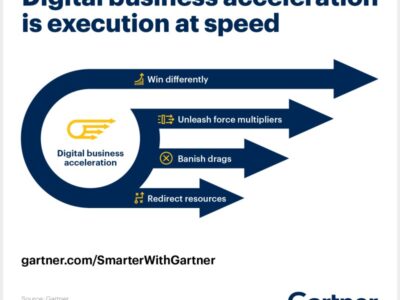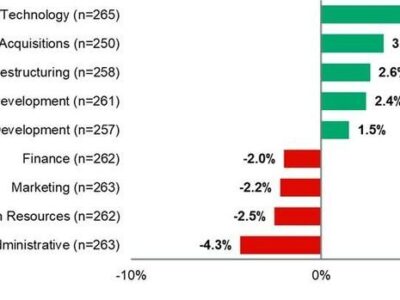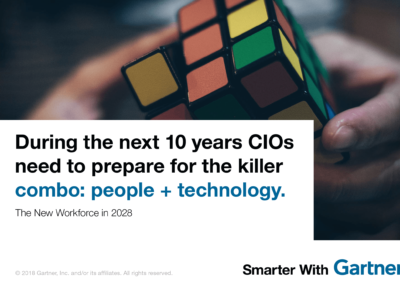CIOs must actively build resilience within agency leadership and inspire confidence in digital government programs.
“I want us to ask ourselves every day, how are we using technology to make a real difference in people’s lives.” — U.S. President Barack Obama
“The digital transformation of government is one of my key priorities” — Sir Jeremy Heywood, Cabinet Secretary and Head of the Civil Service, U.K.
“Digital works, it transforms, it makes it easier for business, easier for government.” — Prime Minister Malcom Turnbull, Australia
Digital government transformation is politically supported and driven by world leaders. Initiatives are underway in almost all agencies, at all levels of government, albeit using different approaches, based on political priorities and the context within which they operate.
Shared goals between the IT department and executive leadership within the government organization are a critical aspect of success.
Regardless of the approach, the journey to digital government is complex, involving significant investment in technology and fundamental changes to how agencies operate. Change of this magnitude cannot be achieved without the agency taking on a level of risk.
However, governments have a comparably low appetite for technology-based risks.
“Digital government failures or even minor setbacks may drive a risk-averse government to take a step back at the exact time it should be making bold digital investments,” said Dean Lacheca, research director at Gartner.
Four actions government CIOs should take
Significant failures or setbacks will have major consequences to the CIO’s digital government program, especially where these failures result in public and under political pressure.
CIOs need to work constantly with their IT leadership teams and the agency leadership in four areas to keep their digital government program on track.
1. Build resilient digital leadership
Resilient digital leadership needs to be established before high-profile digital government failures. CIOs and IT leaders developing a digital initiative should build a partnership with their organization’s head of HR and the lead of any wider transformation programs such as the chief digital officer or head of citizen experience.
“At this stage, digital leaders can ‘recruit’ tech-savvy stakeholders within the organization that will be affected by the program to act as its champions,” said Mr. Lacheca. “This should result in more steadfast support for the program, even in the wake of any setbacks or failures.”
Having this buy-in and feedback from all levels in the organization is also an important part of creating something that meets the needs of all stakeholders.
2. Shared digital government strategy
Shared goals between the IT department and executive leadership within the government organization are a critical aspect of success. IT cannot be expected to successfully deliver digital government if it is focused on technology alone, as opposed to looking more broadly at organizational goals.
Once the shared digital government strategy is established, it must start to deliver tangible business benefits quickly, as political and agency leadership can change even within political cycles. Building trust and confidence can be vital in establishing a degree of tolerance when faced with any future setbacks.
3. Transparent communication
Communication is a vital and often overlooked part of success in digital transformation. Open and continuous communication of progress, successes and setbacks should underpin every stage of digital transformation from planning to delivery.
“It often pays to have a communication strategy in place where the possibility of a setback is known in advance,” said Mr. Lacheca. “This mitigates any perception of panic that can simply add to the sense of ‘crisis’ rather than a ‘bump in the road’.”
4. Proactive risk management
Perspective on risk is one of the fundamental differences between government agencies and the private sector. Agency executives are not driven by a desire for growth or shareholder return, like their private-sector counterparts.
Implementing “fail fast” approaches by backing agile delivery practices with formal reviews at crucial stages by executive leaders ensures there is an opportunity for executive leaders to feel they are closely involved.
“Maintaining an ongoing dialogue on risk should allow the CIO to keep the digital government program on track, and build confidence that any setbacks are under control and within expectations,” said Mr. Lacheca.
Get Smarter
Client Research
Gartner clients can read more in “Four Actions Government CIOs Should Take to Maintain or Regain Trust After a Digital Government Failure.”
Digital Risk & Security Hub
Visit the Gartner Digital Risk & Security hub for complimentary research and webinars.
Gartner CIO Leadership Forum
Gartner analysts, and industry leaders will discuss key issues facing the CIO during Gartner’s CIO conferences taking place February 21-23 in Phoenix, AZ, March 13-15 in London, March 19-21 in Hollywood, Florida, May 18-19 in Munich and June 6-8 in Toronto. You can follow news and updates from the event on Twitter using #GartnerCIO.










